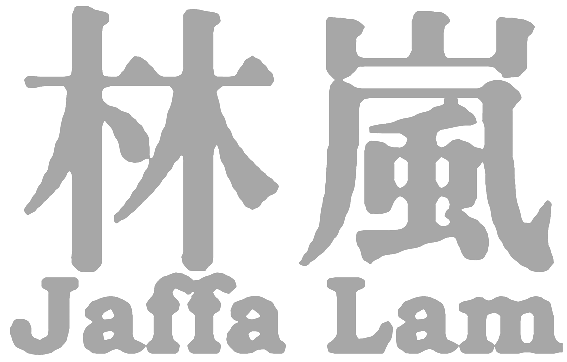Modern Weavolution
織本主義
28/11/2015 - 31/01/2016
鳳甲美術館 Hong-gah Museum, Taiwan
Fabric has always been intimately connected to daily life. It is a necessity of life as well as the material for artistic creation. What Hong-Gah Museum has to offer is its rich collection of embroidery works. How could we get people to know, to appreciate, and to touch the art with long history leads us to the origin of embroidery, so as to see through the intertwined threads and needles, discovering the various possibilities amidst the transformation from point to surface.
Behind the making of fabrics is the accumulation of labor: It mainly was the women in families that contributed to the production of fabrics in Pre-industrial Age. From Industrial Age to nowadays, it has become the underpaid labor in developing countries that makes fabrics. The former is an invaluable household labor, while the latter is a low-priced market exploitation. Such phenomenon is the mirror reflecting the social hierarchy and labor we assign in this day and age.
We are honored by the presence and participation of artists Chia-Wei Hsu, Ya-Chu Kang, Jaffa Lam, Shin-Jie Lo, Chao-Ti Ho, Shu-Man Chang, and “in Blooom”. The exhibition will showcase some of our exquisite collection, Xi Shi Huan Sha for instance, along with modern artworks. Through the dialogue between fabrics and labor, we shall open up a space for the intercourse between the old/antiquity vs the new/modernity, in hopes of unwinding the meaning of fabric, extending to the creators, laborers, and users that take part in the process.
織品的製成意味著勞力的累積:在工業化時代之前,織品的生產多半是由家庭中的婦女所貢獻;邁向工業化時代至今,則轉換為開發中國家的低薪勞力。前者是無價的家務勞動,後者為廉價的市場剝削,此現象無疑正昭示著當下的社會階級與勞動分配。本展結合館藏刺繡作品與當代藝術創作,透過傳統技藝的精神與當代資本社會現象創造對話與反思。
典藏作品「繡刺繡圖」呈現出刺繡工序及生產過程中的集體勞動,包含傳承、研發、創新與追求工藝的極致美好。對照在現今資本主義的掌控下,勞動成為機械式、無意識的生產行為,以廉價為目的的生產,形構出病態的消費與剝削的工作環境。藝術家張淑滿將「刺繡圖」原作以手繪的逐格動畫再詮釋,不僅增添「動起來」的趣味,同時也向傳統刺繡一針一線縫製的精神致敬。
另一組對照是賀照緹的穿在中途島六部曲中的「薩爾瓦多日記」與羅興階的「勞資趣味競賽:你濃我濃」紀錄片,分別紀錄紡織業、成衣業在全球化的影響下,台灣工廠外移與關廠的紀實影片,紀錄國內外勞工的意識覺醒,透過抗爭、協商的過程,學習發聲、爭取權益。
「繡曾后希夜宴圖」是美術館邱再興董事長委託繡莊製作的作品,此作品為「滿繡」,意味著作品的每一吋都是以二、三層以上的絲繡交織而成。早年邱董事長為使面臨解散的繡莊得以持續經營並傳承技藝,除了收購刺繡作品外,還會以委託製作的模式支持繡莊。許家維的「回莫村—壁毯」,他以藝術創作關注泰國清萊回莫村的自強之家與其特殊的區域性歷史,並邀請自強之家的孩子以縫紉機共同創作,紀錄這些被遺忘的人事物。乍看之下,兩件作品呈現強烈的對比與差異,但仔細思考,兩件作品背後的用意與思考卻是殊途同歸。
展覽除了典藏品與當代作品的對話外,當代作品間也有不少激盪,林嵐的「偷一點綠,染一片光」與印花樂「尋常裝飾之不尋常之美」。台灣與香港的紡織曾經有過輝煌的代工生產年代,如今日漸凋零。林嵐以「微觀經濟」系列作品與香港婦女勞工協會合作,實踐藝術社會的經濟互動的創作。蔡玟卉、邱瓊玉和沈奕妤則以「印花樂」設計品牌精神創造一個自給自足的藝術生產與健康的產業循環。
【織本主義】透過探討織品與勞動的關係,創造出新舊古今對話交流的空間。期望藉此織品的意義不再只限於功能性,能更延伸至創作者、勞動者與使用者身上。
偷一點綠,染一片光|Enlightened from Green and Light
拼接雨傘布裝置
2015
藝術家林嵐長期進行的「微觀經濟」系列是和香港婦女勞工協會合作,實踐藝術社會的經濟互動的創作。製作的女工都是以前製衣廠的女工改行,以回收雨傘布為物料來從事藝術創作。
如果說珍惜大自然,愛好綠色,重視回收資源,重新創作是一種生活態度,「手工」則是實踐應用時的一件必需品。但是在大都市,「手工」和「綠色」仍是罕有的資源。
藝術家兩次來到鳯甲美術館,都被窗外的綠色平原所吸引。可惜的是,僅存的綠色生態因都市發展而日漸縮小,終有一天,我們需要靠望遠鏡才能看到那麼一點點的綠。這次林嵐將窗外的「綠色」通過「手工」雨傘布隧道展出,透過「防盗鏡」讓觀者在室內遠觀窗外—那被土地開發商垂涎的一點綠。
在美術館咖啡廳同步展出「微觀經濟」系列的另一件作品,白色的傘布製做白昼的星空,讓人在休憩的同時,亦能欣賞發一個美滿的白日夢。
This is one of the pieces of Jaffa Lam’s long term “Micro Economy” project, which collaborated with Hong Kong Woman Workers’ Association to activate “sunset industry” through art activities. All the workers transform their handicraft experience from garment industry to art making now. Recycled umbrella fabric takes a core role in the project.
When “nature”, “green”, “recycled material” and “up-cycling” compose a life style, “handicraft” definitely is a key medium to bond them together. However, it’s hardly to see “handicraft” and “green” now in the modern city.
Artist fell in love with the piece of green outside the window during the first visit of this museum. However it seems will have more construction in coming years. What a pity! Lam is not sure what it would be later, maybe only tiny green could be seen by telescope in the future. In the name of exhibition, a “handicraft” umbrella tunnel is constructed and dedicated to this piece of “green”.
The stars in the daytime seems invisible, but they do exist. We know day and night, but never do we spent much time to look at the sky colour changed. We sigh only when everything gone.
Maybe we do need to think about what we should do for this society. Actions speak louder than words.





